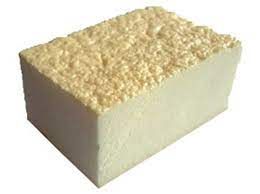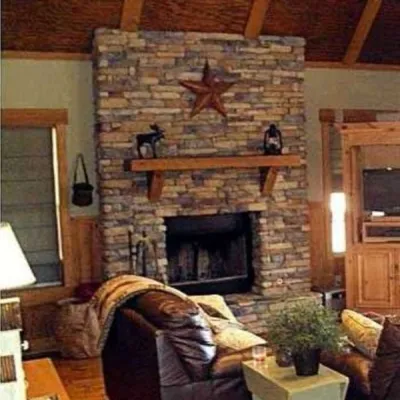For many people on the planet, the question posed in the title of this article is by no means an abstract one: freezing winters or sweltering summers bring such surprises that electricity bills would make anyone cringe in frustration.

He decided, but then the next question arises: how, in fact, to insulate. We should note that today the choice of materials is quite wide, and each of them has its own properties and characteristics. And so our host is at a loss, wondering at all this variety of materials, and thinks ...
Let us help him to understand this difficult question.
Characteristics of thermal insulation materials
Before proceeding to the comparative analysis of insulation materials, we must first define the criteria we will compare. In addition to one of the most important criteria - the cost of the material, there are many other equally important factors, which will largely determine our final choice. These are the characteristics of thermal insulation materials.
Thermal conductivity coefficient
One of the main characteristics of insulating material is its thermal conductivity.
Generally speaking, there are only three types of heat transfer in nature:
- convection;
- thermal radiation;
- thermal conductivity.
Convection, in plain and simple terms, is when you cook an aromatic kebab over the smoldering coals of fire: the hot air constantly rises from them, flowing around the juicy pieces of meat and turning them into one of the most delicious dishes that the culinary genius of humanity has ever produced.
Thermal radiation also plays a significant role in preparing kebabs, but the beach analogy would be a more striking and understandable example. For this, we will accept the following postulates:
- Convection is the movement of heat utilizing some heated movable substance (air, water, oil).
- Between our planet and the Sun, there is a mind-bogglingly long stretch of space that is entirely devoid of any substance whatsoever.
From this, we can conclude that the heat from the sun can not be transferred to holidaymakers baking on the beach utilizing convection by any means.
Here we have a pure case of heat transfer through radiation. It is nothing but the electromagnetic fluctuations of the infrared spectrum, which can carry through the cosmic void monstrous amounts of energy. The peculiarity of this type of heat transfer is that vacuum is not an obstacle for it, but an ordinary curtain can become a severe obstacle.
But let's finally move on to the characteristic of interest, which is called thermal conductivity. Again, for clarity, let's turn to a simple analogy. Here you take a frying pan, pour oil in it, crumble potatoes in it, pour spices, salt it all, put it on the fire, wait an hour, two, three ... but the cold potatoes were lying on the pan, and so they are!
"It doesn't work like that!" - you exclaim indignantly, and you would be absolutely right. Indeed, this would only be possible if the material used to make the frying pan had a coefficient of thermal conductivity close to zero. But what is the point of making a frying pan out of such material? On the contrary, it should conduct heat as well as possible. Therefore, such kitchen utensils are made of metals, which differ from other materials with the highest thermal conductivity. The record-holder in this field is silver, which has the heat conductivity coefficient, marked for clarity by the Greek letter λ (lambda), no less than 428 W/(m*K)!
If we explain this characteristic on fingers, this characteristic tells us that a piece of silver with a thickness of 1 meter and a cross-section of 1 m2, at a temperature difference of only 1 degree at its two ends, lets in a heat flow through itself during one hour with a power of 428 W.
The record-holder antipode of silver, i.e., the substance with the lowest thermal conductivity, is polyurethane foam today. Its thermal conductivity can be as low as 0.019 W/m*K if we take away the piece of silver mentioned in the previous example (quickly sell it and buy a ticket to the Canary Islands). Put a similar piece of polyurethane foam in its place, under the same conditions, and it will pass through itself a minuscule amount of heat - 0.019 W in one hour.
With the thermal conductivity we have understood - let's move on to other properties.
Average Density
To better understand what this property is, one can recall an army anecdote.
A private goes to his sergeant in command:
- Sergeant, permission to address, sir.
- Address.
- What do you think, Sergeant, which weighs more - a pound of iron or a pound of absorbent cotton.
- Well... I think a pound of iron weighs more...
- That's wrong, Sergeant, they weigh the same...
- Listen, private, are you that smart? I'm gonna hit you in the head with a pound of absorbent cotton, then a pound of iron, and .... after you get back from the infirmary, you report back to me what weighs more.
The moral of this fable is this: not only mass but and density plays a significant role in the material's properties.
Scientifically speaking, density is the ratio of the mass of a substance to the volume it occupies. If we are an average person, the following phrase can be used to designate the difference in density of different materials: "Don't you get it, really? It's purely when one stuff is lighter, and the other stuff is, like, heavier!"
When we talk about a low-density material, we call it lightweight.
Density and thermal conductivity are interrelated. When we talk about insulation materials, almost always, a higher density entails a higher thermal conductivity. This is because almost any material of this kind is nothing but packed air. The thermal conductivity of insulation depends primarily on the quality of the "package" of air, the degree of closed pores, and the percentage ratio of "packing material" to the total mass. Such a characteristic determines this quality as porosity.
Porosity - To be continued. Please wait for...



